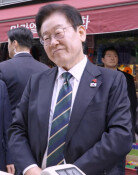Firefighter Delays Could Cost Millions
Firefighter Delays Could Cost Millions
Posted February. 10, 2006 07:01,
A fire broke out in the outside storage yard of Incheons A Logistics Company for no apparent reason on December 8. A company employee reported the fire at 9:12 a.m.
The Seoknam fire station that took the call was only four kilometers away from the site of the blaze, but it took them six minutes to reach the fire. When the fire engines arrived, the flames had already spread out of control. There were many flammable items such as tents and boards at the site. The firefighters extinguished the fire after one hour and forty-five minutes, but by that time, 156 million won worth of assets had gone up in smoke.
A Seoknam fire station official said, It was rush hour, so it took us longer than usual to reach the scene.
How long do firemen have to reach the scene from the time of the ignition of the fire? One fire station has posted an abstract slogan that says: Even a minute faster is better, but Korean fire departments do not have any regulations related to dispatch and arrival time.
Dong-A Ilbo analyzed 11,077 fires that broke out last year in six major cities: Seoul, Busan, Daegu, Incheon, Gwangju, and Daejeon, and examined their fire report times, the arrival time of their firemen, the time it took to suppress fires, and the amount of property damage caused. A geographic information system to visualize the data was also used.
The study showed that the longer it took for the fire trucks to arrive at the scene, the longer it took to extinguish the fire. If firefighters arrived at the scene one minute after the report of the fire, it took an average of 6.2 minutes to suppress it. The time of suppression increased to an average of 8.5 minutes when the arrival time was five minutes after the report.
When the arrival time increased to six minutes, the average time to extinguish the fire increased to 11.5 minutes, which is a three-minute increase. This is a larger difference than the average time of suppression (2.3 minutes) when the arrival time was between one to five minutes. If the arrival time was 10 minutes, the average time of suppression was 16.5 minutes, an eight-minute increase from a five-minute arrival time.
The United States and Canada, which have sophisticated firefighting institutions, have dispatch time guidelines for effective firefighting. The fire departments in these countries have set a six-minute time limit to reach the scene of the fire. This is based on research that six minutes after a fire breaks out, a flashover, when a fire spreads to the point where an ordinary person is not able to contain it, often occurs
According to our research, flashovers in Korea occur in about five minutes.
Professor Park Hyeong-ju of the Fire Systems Engineering department at Kyungwon University said, Since the time to extinguish a fire increases greatly between the time of arrival at five and six minutes, it can be said that Koreas time of flashover is five minutes. Therefore, Korean fire stations should establish a system to enable fire trucks to arrive at a fire scene within five minutes of a fire report.
However, in the six major cities we investigated, the proportion of cases where the arrival time was within five minutes was barely over half at 53.2 percent.
There was a large regional difference in arrival times. Seoul had the fastest at 4.1 minutes, while Busans was 6.4 minutes, Daegus was 5.5 minutes, Gwangjus was 5.2 minutes, Incheons was 4.8 minutes, and Daejeons was 4.4 minutes.
This shows that if Korean firefighters can reach fire scenes a little earlier, they can greatly reduce the amount of fire damage.



![보일러 풀가동해도 춥다?…난방비 폭탄 범인은 ‘이것’ [알쓸톡]](https://dimg.donga.com/c/138/175/90/1/wps/NEWS/IMAGE/2025/12/24/133029046.3.png)



